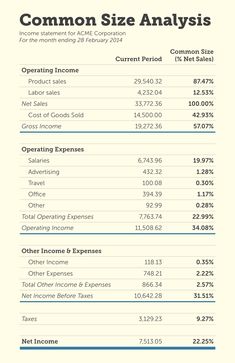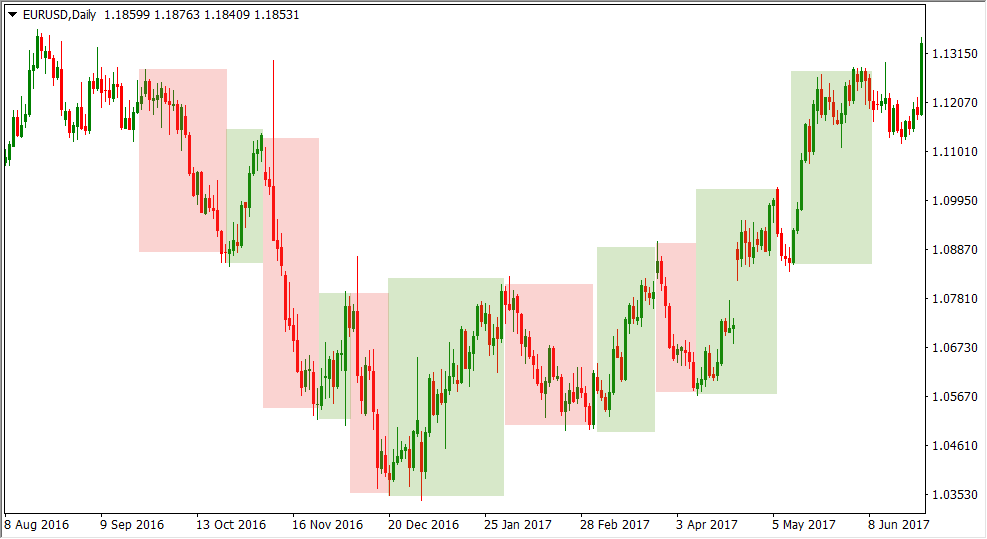
This gives further assures investors about the right time for investing in bonds. Based on the clear ratings, you can choose to buy bonds of any issuer with a better face value of bonds. However, it’s still recommended to conduct your own research before investing. Market participants looking to sell these securities should also know that numerous variables could affect their transactions, including interest rates, the credit rating of their bonds, and the size of their position. Bonds have some advantages over stocks, including relatively low volatility, high liquidity, legal protection, and various term structures.
Using bond ratings can have some drawbacks, such as inaccuracy and unreliability due to biases, conflicts of interest, errors, or delays in the rating process. Rating agencies have been criticized for being too lenient or too harsh in their ratings, or for not anticipating or warning about major credit events. Additionally, they focus mainly on creditworthiness and default risk but do not capture other aspects of quality and risk.
How Much of My Portfolio Should Be in Stocks?
Investors considering fixed-income securities might want to research corporate bonds, which some have described as the last safe investment. As the yields of many fixed-income securities declined after the financial crisis, the interest rates paid by corporate bonds made them more appealing. Mainly two types of returns are available on two types of bonds in the bond market, i.e., fixed-rate bonds and floating-rate bonds. In fixed-rate bonds, the returns are fixed (pay a predetermined interest rate at regular intervals); in floating-rate bonds, returns fluctuate (fluctuation based on benchmark rate). The customer price index and London interbank offer rate are considered benchmark rates.
Bonds are an instrument (high-security debt instruments) issued by the government, municipalities, corporates, states, and other entities to collect funding for their projects. These bonds are issued by central or state governments and corporations when they face a liquidity crisis and need funds for infrastructure development. The bond is a loan taken from the investor by the borrower, such as a company or government, in which an investor receives interest on the investment, but the bond market value can change over time. Bond ratings are a common tool for investors and analysts to assess the quality and risk of different bonds, especially municipal and corporate bonds.
Larger Investment needed
While we adhere to strict
editorial integrity,
this post may contain references to products from our partners. Joint Bonds offer advantages such as sharing of liability, increased borrowing capacity, and enhanced creditworthiness. Joint Bond is a type of bond issued by two or more entities who share liability for the debt. However, they may also result in higher borrowing costs and limited access to capital for entities with weaker credit profiles.

On this day, of the 8,018 investment grade corporate bonds available, only 55 (0.7%) were priced at or above 150. For high yield bonds, only one out of 1,120 bonds was priced at or above 150. When corporate bond ratings are downgraded from investment grade (Baa3 / BBB- and higher) to below investment grade, forced selling can occur, as certain institutional funds have to sell the downgraded bonds. It is a smaller group of investors that can own high yield corporate bonds, so these price drops can often be significant. With individual bonds, investors know the precise amount of, and date on which, they will be paid for each bond CUSIP they own.
Mail us on h[email protected], to get more information about given services.
Enhanced Creditworthiness
This can be a good thing for short-term stockholders (like so-called ‘activist’ investors) and executives looking to execute stock option grants. Bonds are IOUs an investor purchases from a company for cash with interest. Explore the basics of bond financing, how to use bond financing, and the advantages of bond financing in this lesson. Of course, asset allocation mixes are unique to each individual, based on an investor’s age, risk tolerance, and long-term investment and retirement goals.
- Bed Bath should not have been permitted to get itself into the financial position it did by prioritizing shareholder buybacks of its bondholders, employees, and vendors.
- Bond fund investors, on the other hand, cannot trade intraday, as bond fund trades are executed based on the fund’s end-of-day net asset value per share.
- Bond ratings are opinions expressed by independent rating agencies, such as Moody’s, Standard & Poor’s, and Fitch, about the creditworthiness and default risk of bond issuers and their specific debt securities.
While fixed income investments provide higher income security than stocks, there are some differences across corporate bonds, municipal bonds, and bond funds. For example, in Figure 2, there were 123 high yield corporate bonds that had YTMs of at least 7.0% and less than 8.0%. In Figure 3, there were 1,821 investment grade corporate advantages and disadvantages of bonds bonds with YTMs of 5.00% to 5.49%. Figure 4 shows the dearth of municipal bonds with YTMs above 5%, as only 6 out of 18,982 municipal bonds had yields this high. Fidelity.com does not offer trading in “high yield” municipal bonds; however, as we discuss further below, this is a very small part of the municipal bond market.
What are the benefits and risks of bonds?
Stocks and bonds each possess their own sets of advantages and disadvantages. Furthermore, each asset class features dramatically different structures, payouts, returns, and risks. Understanding the distinguishing factors that separate these two asset classes is key to building a healthy investment portfolio that thrives over the long haul. A step coupon rate provides interest payments that change at predetermined times, and usually increase. Most of these securities come with a call provision, meaning that investors receive the initial interest rate until the call date. After reaching the call date, the issuer either calls the bond or hikes the interest rate.
ETF Explained: A Comprehensive Guide to Exchange-Traded Funds … – NNN NEWS NIGERIA
ETF Explained: A Comprehensive Guide to Exchange-Traded Funds ….
Posted: Tue, 08 Aug 2023 05:12:23 GMT [source]
Multisector bond funds also tend to focus on bonds based on the time horizon. For example, some of the funds may focus on shorter-maturity bonds, thus making the fund less exposed to interest rate changes. In other words, they offer a rate that is equal to LIBOR+ a stated interest margin. The caveat of this type of fund is that securities have a higher default risk than investment-grade securities. However, since the fund invests in a broad range of junk bonds, one of the bonds getting default will not significantly impact your portfolio. If bonds are held to maturity the investor will receive the face value, plus interest.
For example, security of principal and income are strong across corporate bonds and municipal bonds but less so for stocks and bond funds. We first discuss corporate bonds advantages vs. bond funds, municipal bonds, and stocks. Not all of the disadvantages apply to the other asset classes, which is why we discuss corporate bonds advantages and disadvantages separately. Bond ratings offer several advantages, such as being easy to understand and apply due to their concise summary of the creditworthiness and default risk of bond issuers and their debt securities. Additionally, rating agencies review and revise their ratings regularly to reflect changes in the credit quality and risk profile of bond issuers and their debt securities, as well as market conditions and events.
Bonds are less volatile and riskier than stocks, and when held to maturity, they may provide more constant and consistent earnings. Interest rates on bonds are frequently greater than those on savings accounts at banks, CDs, or money market funds. Bonds are an instrument of indebtedness of the bond issuer (Companies or Business Organizations) to the holders. Companies and governments use bonds to raise money by borrowing from investors.
Clear Ratings
As we know, bonds are considered less risky investments because they promise their issuer to return the face value of the bond. Bonds yield a meaningful increase in investment and provide investors with an opportunity to earn a decent income. However, they also come with potential disadvantages, including the risk of default, conflicts among joint bondholders, and shared responsibility for the bond’s debt.

It is difficult to anticipate the NAV of the fund, and it makes bond funds less attractive to investors compared to individual bonds. In general, stocks are riskier than bonds, simply due to the fact that they offer no guaranteed returns to the investor, unlike bonds, which offer fairly reliable returns through coupon payments. Stocks are inherently more volatile than bonds because in the event of a corporate bankruptcy, bondholders (who are a company’s creditors) have priority in being repaid. Meanwhile, owners of common stock are last in line, and can end up with nothing if the company goes bankrupt. Beyond maturity considerations, corporate bonds may offer many different coupon structures.
In most ways investing in bonds benefits everyone because of the dependability of interest and principal returns. That’s usually the minimum to buy a bond, though you can buy a diversified bond portfolio for much less using bond ETFs. The articles and research support materials available on this site are educational and are not intended to be investment or tax advice.
This can expose issuers to risks and liabilities that may not be directly related to their core business activities, potentially impacting their financial performance and credit ratings. Many might assume that, given their massive size, bond funds would have greater income security. In a January 12, 2023 article in The Wall Street Journal titled “For Closed-End Fund Investors, Paper Losses Turn Real,” Heather Gillers explains how a PIMCO California municipal bond fund cut dividends by 45%. Please note that Figure 2 uses a different y-axis scale than Figures 3 and 4 to show greater detail for high yield corporate bonds with yields above 7%.